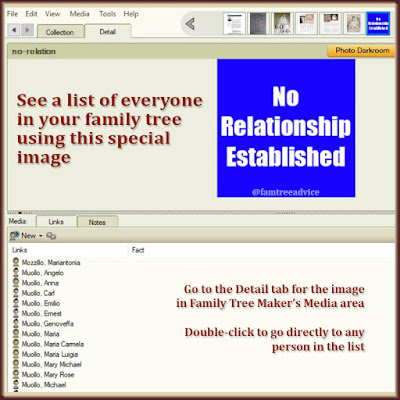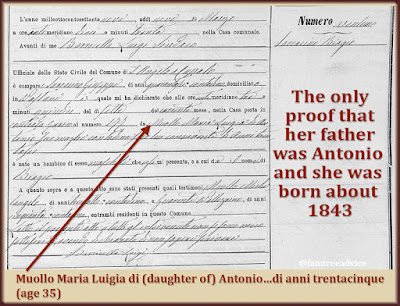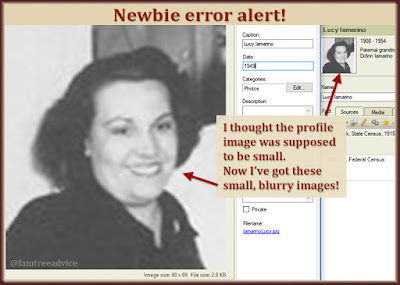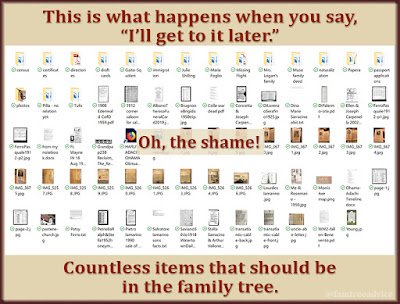What do you do when that unattached branch takes root in your family tree?
Before 1900, all my ancestors came from small towns in Italy. In the 1800s there was very little moving around. Each person stayed in one town their entire life. Unless they arranged an inter-town marriage. And even then, the spouse was usually from a town or two away.
Because of all the intermarrying, I'm related to entire towns. By blood or marriage, I can find some relation to nearly everyone in each of my town's vital records. (Find out how to download vital records from your ancestor's Italian hometown.)
I found this out by recording every vital record for my grandfather's town. The documents ranged from 1809 to 1860 and included the names of more than 15,000 people.
As I added people to a separate Family Tree Maker file, I saw how they were all related. I connected more than 10,000 people to my grandfather. Then I imported them to my main tree.
That'll boost your family tree size!
Lately, as one of my 2019 genealogy goals, I've been adding a bunch of unrelated people to my family tree. I'm adding every baby born in my other grandfather's hometown who has the last name Pozzuto. (That name has some strong DNA matches.)
The idea is to figure out their relationship to me. I add a baby and its parents. I look for the baby's siblings and then for the parents' marriage. If I find the marriage, I can learn the baby's grandparents' names. I may even learn the great grandfathers' names. (Not sure why you'd want to add unrelated people to your tree? See "2 Reasons to Add Unrelated People to Your Family Tree".)
As I add each person to my tree, I:
- Compare their facts to anyone in my tree with a similar name.
- Attach my "No Relationship Established" image as their profile image. (Find out how to find the unrelated people in your family tree using Family Tree Analyzer.)
If I can't find my connection to that random Pozzuto baby's family, I move on to the next baby.
About 200 people in my family tree are sporting that "No Relationship Established" image. But there are magical moments that make it so worthwhile.
 |
| In Family Tree Maker, it's easy to see who's attached to any image. |
I'll be building out a family. The bride was already in my tree, and now I know who the groom is. When I attach them to one another, boom! Suddenly the guy's description goes from "No direct relationship found" to something wild, like "Grand nephew of wife of 1st great-uncle of husband of paternal grandmother of husband of 1st great-aunt" of me!
Now the groom, his siblings, their spouses, his nieces and nephews, his parents and grandparents, are ALL related to me in some way.
But they still have that big blue "unrelated" image. That has got to go.
It's beyond tedious to view each newly related person and remove that image.
So I found a shortcut. While looking at the family in tree view in Family Tree Maker:
- Click each person and put a 1 at the beginning of their last name. Onofrio 1Pozzuto, Donato 1Pozzuto, Rosa 1Martuccio, and so on.
- Choose one person and click to see their Media tab.
- Select the "No Relationship Established" image and click the link icon.
- Click the checkbox for each person at the top of the list whose last name begins with a 1.
- Click the "Unlink Selected" button. If you select a lot of people, you may have to wait a minute for the process to finish.
- Remove the 1 from the beginning of each last name.
 |
| You'll love this tip when a big branch suddenly has a relationship to you. |
I get such a rush out of this. I took a random baby and turned him into 50 new distant relatives.
I've visited my ancestral hometowns and felt a deep, strong connection. That's what inspired my endless, giddy pursuit of tons of relatives. My DNA is 96% from this Southern Italian region with just a touch of Greece. These towns ARE my DNA. They are me.
That's my inspiration, and it's why I'll be practicing genealogy until I can no longer use a computer.
I hope this tip will help you turn prospective relatives into deep-in-your-bones relatives.












